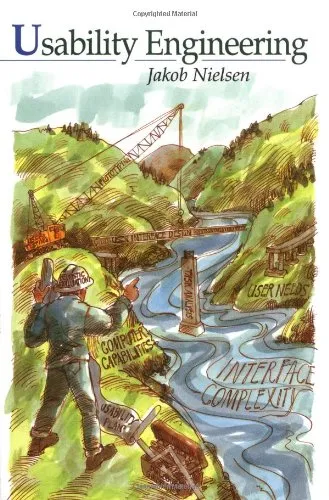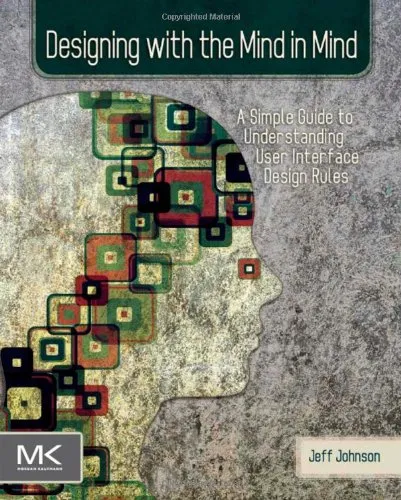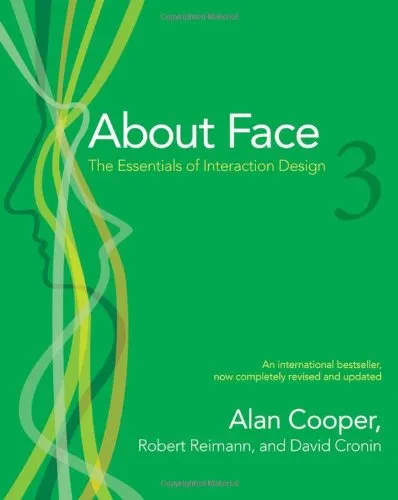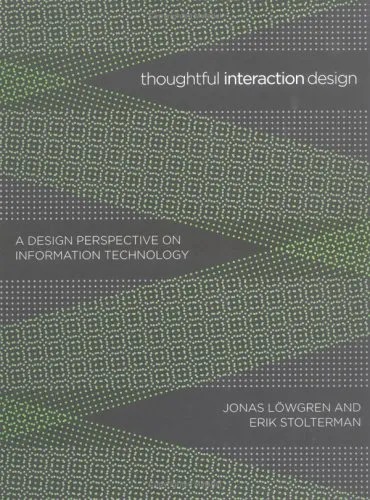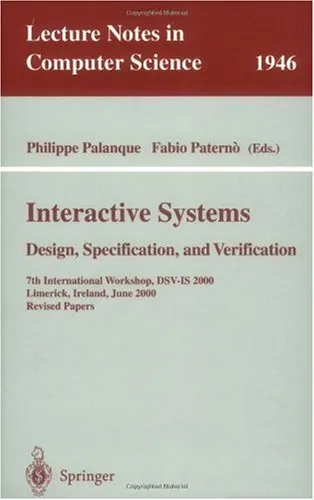Interactive Systems. Design, Specification, and Verification: 15th International Workshop, DSV-IS 2008 Kingston, Canada, July 16-18, 2008 Revised Papers
4.0
Reviews from our users

You Can Ask your questions from this book's AI after Login
Each download or ask from book AI costs 2 points. To earn more free points, please visit the Points Guide Page and complete some valuable actions.Related Refrences:
Introduction to "Interactive Systems. Design, Specification, and Verification: 15th International Workshop, DSV-IS 2008"
This book is a comprehensive collection of revised papers presented at the 15th International Workshop on Design, Specification, and Verification of Interactive Systems (DSV-IS 2008). Held in Kingston, Canada, from July 16-18, 2008, this workshop brought together researchers, practitioners, and thought leaders in the field of human-computer interaction (HCI) to discuss the challenges and innovations in interactive system design and usability. The book serves as a repository of expert knowledge and cutting-edge research, catering to both academics and practitioners seeking to deepen their understanding of interactive systems.
Detailed Summary of the Book
The book delves into the multi-faceted nature of interactive systems, emphasizing theories, methodologies, tools, and real-world applications. Each chapter represents a scholarly contribution addressing key design challenges faced when developing interactive systems, particularly those involving complex user interfaces. Topics range from formal specification techniques and interaction models, to usability evaluation methods, prototyping strategies, and software engineering workflows tailored to user experiences.
One overarching theme is the integration of formal methods with user-centered design principles. Bridging these areas ensures that systems are both reliable in their functionality and intuitive for their users. The papers included in this volume address the principles of interaction design while ensuring technical rigor in their construction. The book also discusses emerging trends, such as multi-modal interaction, ubiquitous computing, and interactive visualization tools.
These insights are crucial for designing systems that meet the highest standards of accessibility, usability, and performance. Whether applied to healthcare, transportation, education, or any other sector, the frameworks and lessons presented in this book provide much-needed guidance for professionals in the HCI domain.
Key Takeaways
- The importance of integrating formal specification techniques to enhance the reliability of interactive systems.
- How user-centered design methodologies contribute to higher levels of usability and intuitiveness in software development.
- Practical case studies that highlight the challenges and successes of implementing interactive systems in real-world scenarios.
- Insights into the use of prototyping tools and interactive testing workflows to validate design concepts during early stages of development.
- An exploration of the emerging trends in HCI, from multi-modal interactions to adaptive systems and pervasive computing.
Famous Quotes from the Book
"Designing for interaction isn't just about usability—it’s about creating experiences that resonate with users, fulfilling their needs while inspiring confidence in the technology."
"The intersection of formal methods and user-centered design opens up new pathways for developing systems that are both reliable and human-centric."
Why This Book Matters
The field of human-computer interaction is growing rapidly, and designing reliable, accessible, and adaptable interactive systems has never been more important. This book stands out for its intellectual depth, practical relevance, and its ability to bridge the gap between academic research and industry practices. The insights gathered here are not only valuable for advancing HCI as a discipline but also for improving the quality of life of users everywhere.
What makes this book truly matter is its relevance across a range of sectors and industries. From healthcare applications aimed at saving lives to educational systems that empower learners, the techniques and frameworks discussed within these pages have universal significance. Furthermore, it fosters a collaborative spirit among experts, inspiring innovation and raising the bar for usability standards worldwide.
Whether you're a researcher delving into the theoretical foundations of interactivity, a practitioner developing cutting-edge solutions, or a curious innovator looking for inspiration, this book offers unparalleled value. It encapsulates the wisdom of some of the brightest minds in the field, paving the way for designing interactive systems that are as robust as they are user-friendly.
Free Direct Download
You Can Download this book after Login
Accessing books through legal platforms and public libraries not only supports the rights of authors and publishers but also contributes to the sustainability of reading culture. Before downloading, please take a moment to consider these options.
Find this book on other platforms:
WorldCat helps you find books in libraries worldwide.
See ratings, reviews, and discussions on Goodreads.
Find and buy rare or used books on AbeBooks.
1255
بازدید4.0
امتیاز0
نظر98%
رضایتReviews:
4.0
Based on 0 users review
Questions & Answers
Ask questions about this book or help others by answering
No questions yet. Be the first to ask!


